Solo Seats OEM Replacement

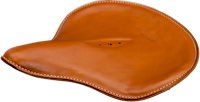
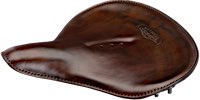

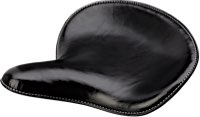
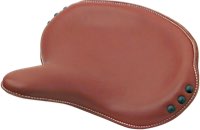
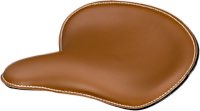
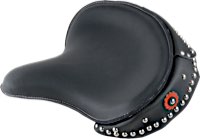
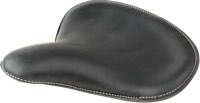
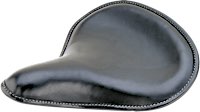
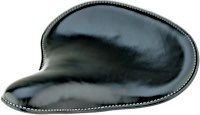
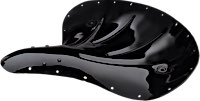
Original solo saddles
The first saddles on Harleys still looked a lot like those of bicycles. That is absolutely not meant in a derogatory way here, it was simply the adaption of a familiar and proven technique by the Motor Co. The seats were mounted on a hairpin spring at the nose front and two barrel springs at the rear.
The Ful Floteing Seat
Beginning in 1912, the Factory delivered its bikes with an improvement. What looks like a spelling mistake is the marketing strategy for a clever invention. To allow the Harley rider to move only in the longitudinal plane (i.e. up and down and slightly forward and back), but not tilt sideways, the seats were bolted to a bar whose bearing at the front end allowed movement only in that plane. The rod and thus the seat were sprung by a plunger or plunger piston guided and sprung in the saddle tube. The saddle itself continued to have additional springs at the rear end.
The centrally suspended Harley saddle
Beginning in 1925, in parallel with a new frame for the F and J models, there was a modified single seat that was bolted securely to a cross-shaped carrier. The torsionally rigid carrier was mounted and sprung in such a way that the rider could not tilt sideways, provided all bearing points were well lubricated and free of play. Harley-Davidson continued this system on the big Twins (Knucklehead, Flathead, Panhead, Shovelhead) with minimal changes into the 1970s. The small Twins of the 750 series had the same seats, with only frame-related differing brackets and springs. And K-model and Sportster could be ordered with suspended solo seats until the mid-1960s, too.

Have any questions?
Our service team will be glad to help out: Mondays - Thursdays 08:00-17:00 CET, Fridays 08:00-16:00 CET, Phone: +49 / 931 250 61 16, eMail: service@wwag.com